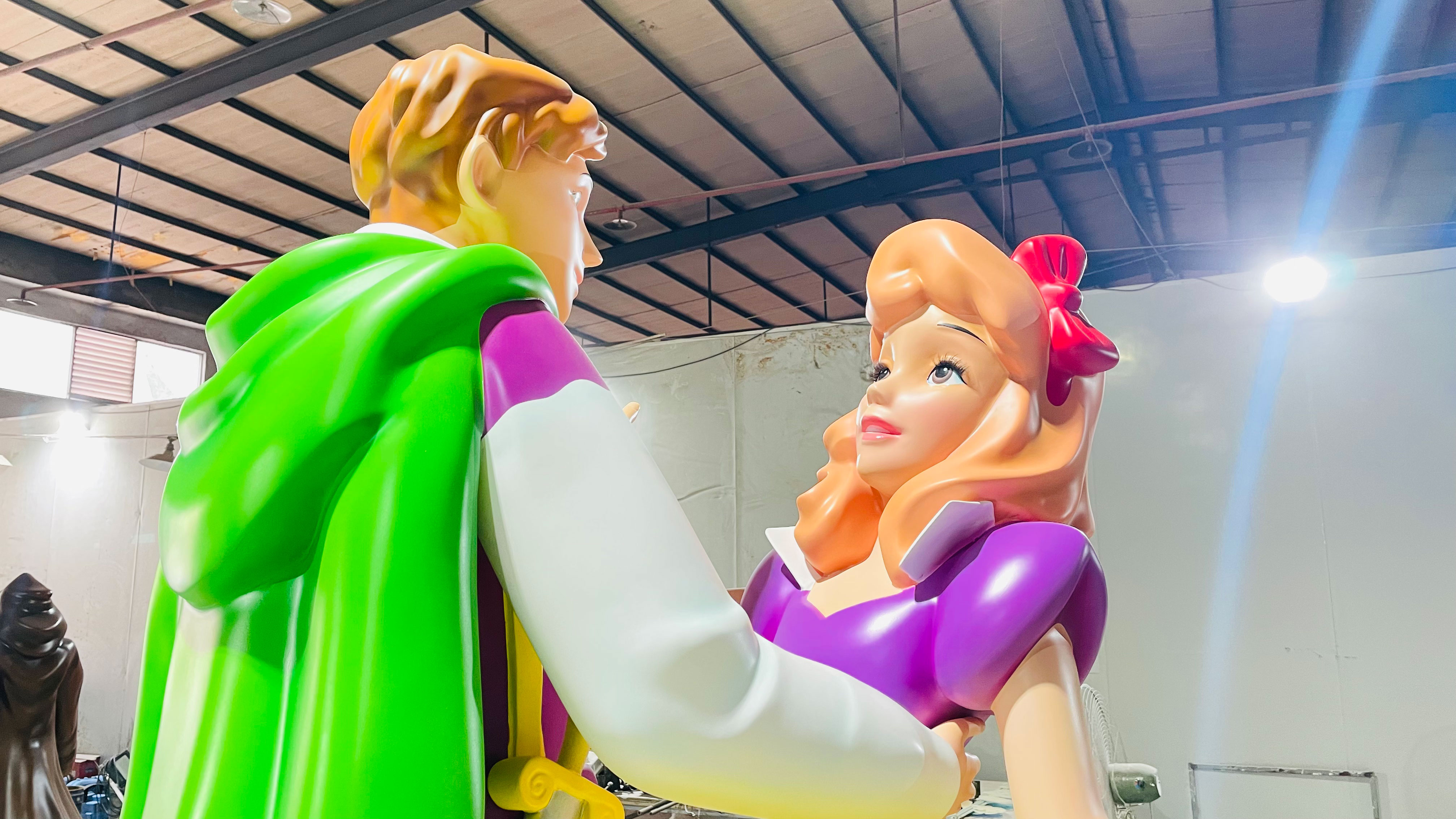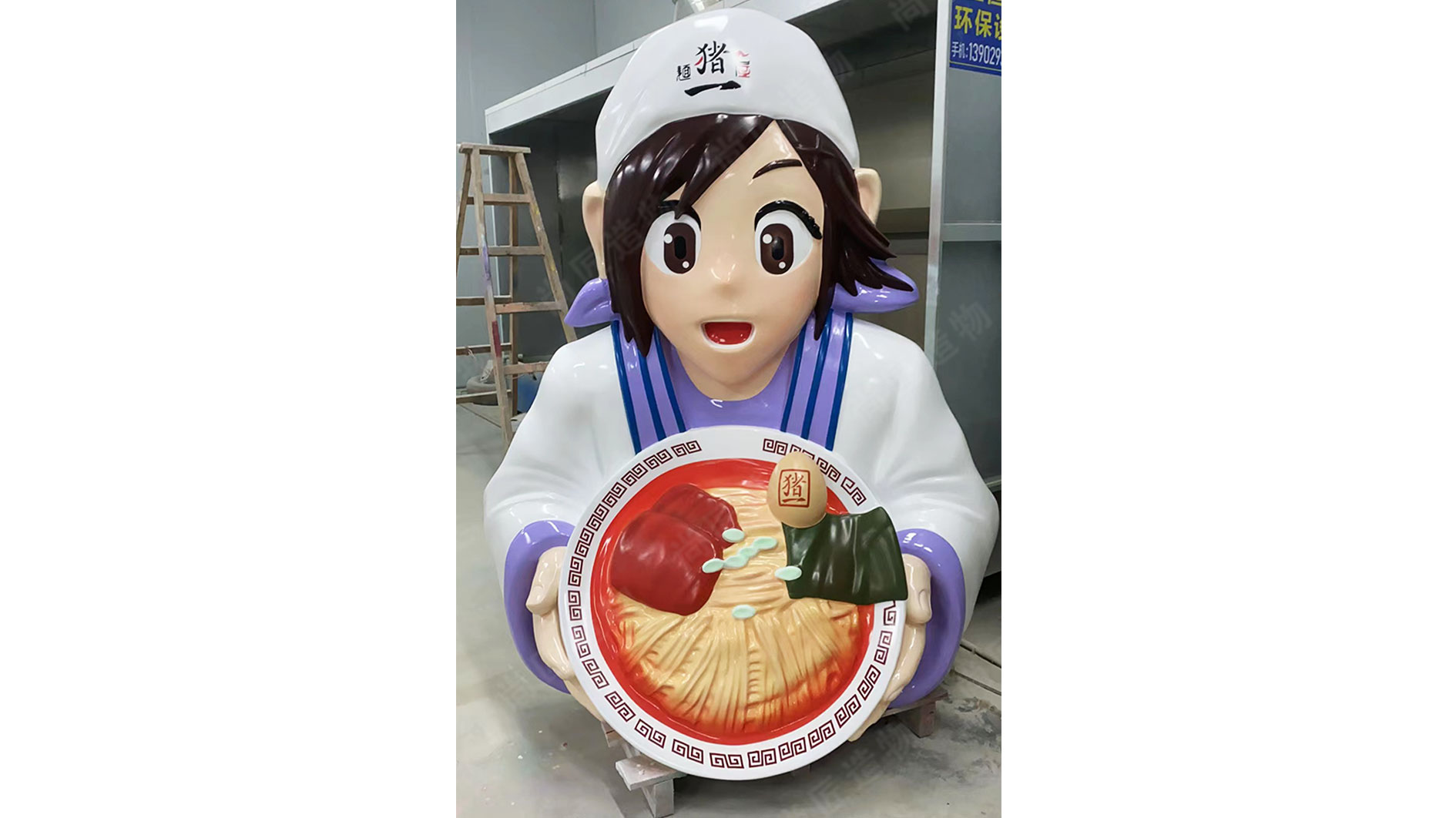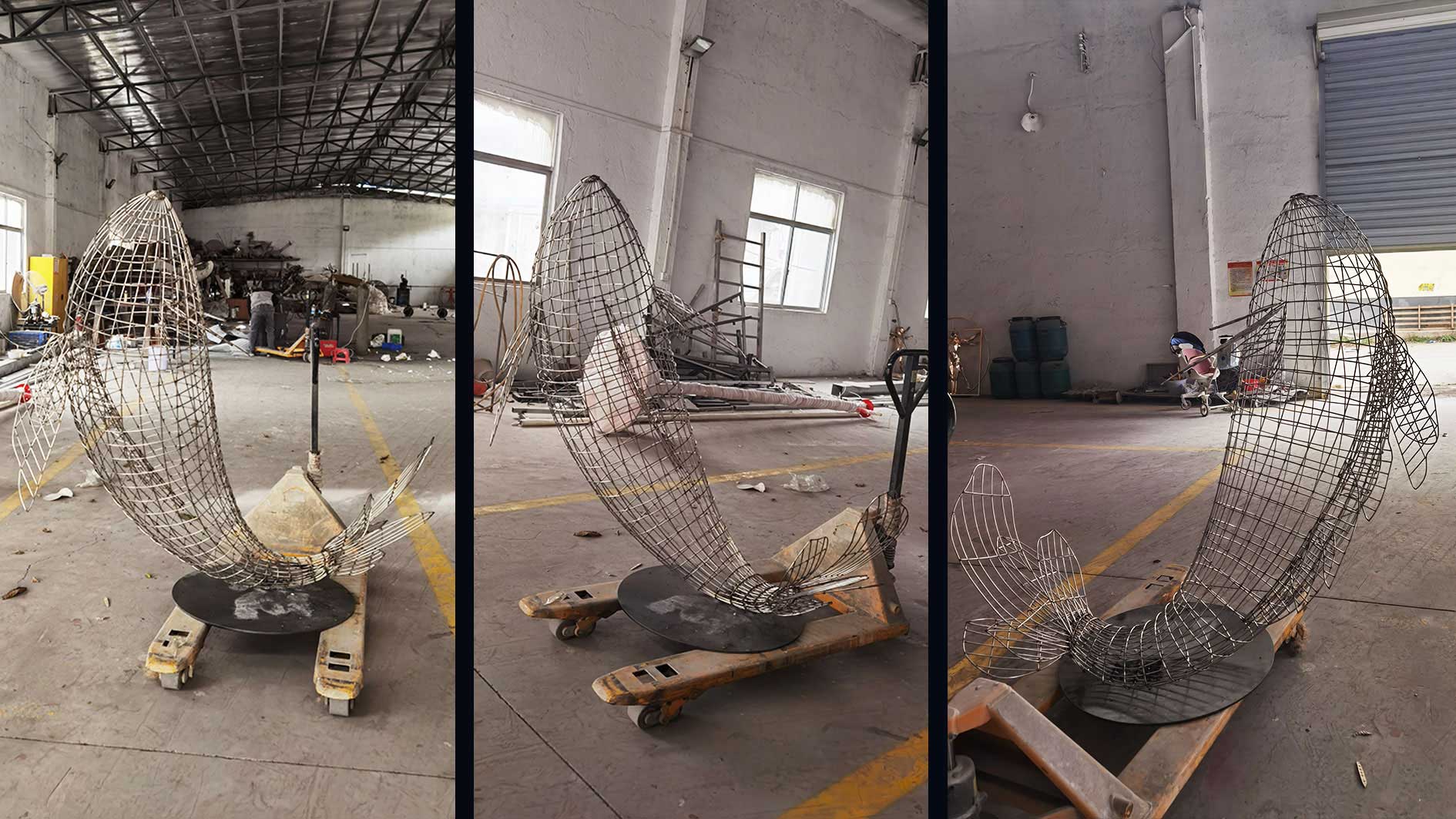Key Takeaways
Modern metal art sculptures reveal a compelling intersection of kinetic geometry and contemporary aesthetics, where rigid materials transform into dynamic visual narratives. Central to this movement is the reinterpretation of Bauhaus principles—structural purity and functional simplicity—through industrial metals like steel and aluminum. Artists harness generative abstraction to create algorithmic patterns, embedding motion into static forms via asymmetrical balance and layered planes. This fusion bridges historical design philosophies with digital-age experimentation, resulting in sculptures that appear to shift with light and perspective.
Spatial interplay emerges as a critical element, with negative space amplifying tension between solid and void. Cubist influences resurface in fragmented geometries, while kinetic innovations introduce mechanical or wind-driven elements that challenge traditional notions of permanence. Collectively, these works demonstrate how metal transcends its utilitarian origins, becoming a medium for exploring time, perception, and the evolving dialogue between art and engineering.

Kinetic Geometry in Modern Metal Art
Kinetic geometry in modern metal sculpture emerges from the interplay of motion-inspired forms and mathematical precision. Artists manipulate angular planes, rotating volumes, and interlocking shapes to create works that suggest movement even in static installations. This approach builds upon early 20th-century constructivist principles while incorporating laser-cut steel and parametric modeling tools.
| Geometric Element | Functional Purpose | Material Innovation |
|---|---|---|
| Interlocking Planes | Create visual tension | Weather-resistant alloys |
| Rotational Axes | Suggest implied motion | Powder-coated steel |
| Fractal Patterns | Enhance depth perception | Laser-etched aluminum |
The fusion of Bauhaus-inspired minimalism with computational design becomes evident in works like Fiberglass sculpture hybrids, where rigid metal frameworks contrast with organic composite materials. Contemporary practitioners employ algorithmic patterning to generate geometric sequences that respond to environmental factors—light shifts revealing hidden symmetries, or wind currents activating latent kinetic potential in balanced armatures. Such techniques transform Euclidean principles into experiential narratives, their crisp edges and calculated voids inviting viewers to mentally complete suggested trajectories of movement.

Bauhaus Minimalism Meets Metal Sculpture
The Bauhaus movement’s emphasis on functional simplicity finds renewed expression in modern metal sculptures, where industrial materials like stainless steel and aluminum replace traditional mediums. Artists channel Walter Gropius’ principle of “form follows function” into geometric abstractions, stripping designs to their elemental lines and planes. This approach transforms cold, rigid metals into fluid compositions that echo László Moholy-Nagy’s kinetic experiments, yet with a contemporary twist—laser-cut precision and modular assembly techniques enable seamless interlocking of geometric units.
A striking example is the IP character sculpture, which reimagines minimalist forms through layered steel plates, creating depth through negative space. Such works retain Bauhaus’ disciplined asymmetry while incorporating motion—sections pivot or overlap to alter visual weight depending on the viewer’s perspective. This interplay between static material and implied movement bridges early 20th-century design philosophy with today’s focus on interactive art. By reducing visual noise, these sculptures amplify the intrinsic textures of metal, turning industrial austerity into a narrative of balance and transformation.
Generative Abstraction in Contemporary Forms
Generative abstraction redefines modern metal sculpture by merging algorithmic design with physical craftsmanship. Unlike traditional methods reliant on manual shaping, this approach employs parametric software to translate mathematical patterns into three-dimensional forms. Artists such as Reuben Margolin and installations like Wave Field exemplify how iterative algorithms produce intricate geometries in stainless steel sculptures, balancing precision with organic fluidity. Building on Bauhaus principles of functional simplicity, these works layer computational complexity—such as fractal repetitions or Voronoi tessellations—to evoke dynamic tension between order and chaos. For instance, procedural modeling techniques allow variations in surface textures, transforming rigid metal into seemingly pliable, kinetic structures. This fusion of code and metallurgy not only expands sculptural possibilities but also reflects broader cultural shifts toward digital-aesthetic hybridity. By embedding generative logic into materiality, artists bridge historical minimalism with contemporary explorations of emergence, where form evolves from systematic yet unpredictable interactions.

Dynamic Spatial Interplay of Metal Sculptures
The dynamic spatial interplay of modern metal art sculptures redefines how three-dimensional forms engage with their surroundings. By manipulating geometric volumes and angular planes, artists create kinetic illusions that shift perception as viewers move around the work. This interplay draws from Bauhaus principles of functional geometry but expands them through computational design techniques, allowing for fluid transitions between solid mass and negative space. For instance, folded steel surfaces catch light differently at varying angles, producing shadow patterns that animate static installations.
Such spatial dynamism often contrasts with traditional approaches to Realistic sculpture, prioritizing abstract relationships over figurative representation. Laser-cut aluminum components, when arranged in helical configurations, demonstrate how rotational symmetry can imply motion without mechanical parts. These works challenge passive observation, inviting audiences to physically navigate the sculpture’s perimeter to fully grasp its evolving geometry. The result is a dialogue between mathematical precision and organic visual rhythms—a hallmark of contemporary metal art’s ability to merge industrial materials with perceptual fluidity.
Bridging Bauhaus and Generative Art Trends
The interplay between Bauhaus principles and generative art methodologies reveals a shared fascination with geometric purity and systematic creation. Bauhaus artists like László Moholy-Nagy emphasized "the integration of technology and art" through minimalist forms, while generative abstraction relies on algorithmic patterns to produce dynamic structures. Modern metal sculptures synthesize these philosophies by translating mathematical precision into tactile, three-dimensional experiences. For example, kinetic works that rotate to expose shifting geometric relationships echo Bauhaus’s emphasis on functional aesthetics, yet derive their motion sequences from computational code—a hallmark of generative art.
"Geometry is the language of universal truths, whether rendered by hand or algorithm." – Adaptation from Moholy-Nagy’s The New Vision (1947).
This synthesis is evident in sculptures that balance industrial materials like stainless steel with organic, algorithm-driven curves. A practical tip for viewers: observe how light interacts with angular and curved surfaces simultaneously—this duality often embodies the Bauhaus-generative dialogue. Notably, some artists even incorporate whimsical elements, such as Cartoon sculpture, to challenge rigid geometric norms while maintaining structural discipline. The result is a visual conversation where modularity meets unpredictability, proving that metal’s rigidity can paradoxically express fluid artistic evolution.
Modern Metal Sculptures: Kinetic Innovations
Building upon Bauhaus principles of functional simplicity, contemporary metal sculptors are redefining kinetic art through engineered motion. By integrating precision-cut geometric forms with balanced pivot systems, artists create works that respond to environmental forces—wind, light, or human interaction—transforming static metal into rhythmic visual narratives. This evolution pushes beyond mid-century kinetic sculpture traditions, employing aerospace-grade aluminum and stainless steel alloys to achieve featherlight rotational capacities unseen in earlier brass or iron constructs.
Notable innovators like Anthony Howe and Reuben Margolin demonstrate how computational modeling refines harmonic movement patterns, blending mathematical symmetry with organic flow. Their suspended helix arrays and undulating planar sequences reveal how modern fabrication tools expand kinetic possibilities while honoring minimalist aesthetics. Such works act as transitional bridges between rigid industrial materials and the ephemeral nature of motion, mirroring generative art’s algorithmic unpredictability within controlled metallic frameworks. As viewers engage with these shifting geometries, the sculptures challenge perceptions of permanence in metal art, suggesting new dialogues between engineered precision and spontaneous expression.

Geometry as Narrative in Metal Artworks
Modern metal sculptures increasingly treat geometric forms as visual language systems rather than static shapes. By arranging angular planes, spiraling curves, or interlocking polygons, artists encode conceptual narratives about time, movement, and human-environment relationships. This practice traces its roots to Bauhaus principles, where simplified geometries communicated functional ideals, but evolves them through intentional asymmetry and kinetic suggestions. For instance, laser-cut steel panels might fold into tetrahedral clusters that imply unfolding motion, while brushed aluminum spirals echo natural growth patterns.
Such works often balance mathematical precision with subjective interpretation. A hexagonal lattice could symbolize urban connectivity in one context or molecular structures in another, depending on surface treatments and spatial orientation. Contemporary creators like [Artist Name] employ parametric modeling to generate forms that shift in perceived meaning as viewers circumnavigate the piece—a triangular void might frame a landscape differently at dawn versus dusk. This interplay transforms cold-rolled metals into dynamic storytellers, using geometry’s universal vocabulary to bridge abstract design and tangible metaphor.
From Cubism to Kinetic Metal Expressions
The geometric fragmentation pioneered by Cubist artists like Picasso and Braque laid critical groundwork for kinetic metal sculpture’s evolution. By deconstructing objects into angular planes and overlapping perspectives, Cubism challenged static representation, a principle later amplified through metal’s malleability. Postwar sculptors reinterpreted these fractured geometries by incorporating motion, transforming rigid steel and aluminum into dynamic forms that respond to environmental forces. Artists such as Naum Gabo explored kinetic potential in the 1920s, but it wasn’t until advancements in industrial materials and engineering that metal sculptures achieved true kinetic complexity. Modern practitioners like Lin Emery fuse Cubist-inspired asymmetry with mechanized elements, creating works where polished surfaces catch light differently with each rotation. This progression from canvas-based abstraction to three-dimensional interactivity reflects a broader shift in artistic priorities—where once form followed function, now form embodies function through motion. Such innovations maintain dialogue with Bauhaus principles of streamlined design while embracing computational tools to model fluid geometries, bridging early 20th-century avant-garde experiments with today’s algorithmic artistry.

Conclusion
Modern metal art sculptures embody a synthesis of historical precision and contemporary experimentation, forging connections between Bauhaus principles of functional simplicity and generative art’s algorithmic complexity. By integrating kinetic geometry, these works transform static forms into dynamic experiences, inviting viewers to engage with shifting perspectives and spatial relationships. The interplay of light, motion, and angular abstraction challenges traditional notions of sculpture as fixed objects, instead framing them as evolving dialogues between materiality and perception.
As artists continue to reinterpret geometric narratives through industrial metals, the field bridges decades of artistic philosophy—from Cubism’s fractured planes to today’s computational designs—without sacrificing tactile authenticity. This trajectory underscores metal’s enduring adaptability as a medium, capable of harmonizing mathematical rigor with organic fluidity. The result is a visual language that resonates equally with architectural discipline and abstract spontaneity, positioning modern metal sculpture at the crossroads of art, engineering, and philosophical inquiry.

Frequently Asked Questions
How does Bauhaus minimalism influence modern metal sculptures?
Bauhaus principles emphasize geometric purity and functional aesthetics, which inform the clean lines and structural precision in contemporary metalworks. Artists reduce forms to essential shapes while maintaining dynamic balance, creating sculptures that echo modernist ideals through industrial materials.
What defines "kinetic geometry" in metal art?
Kinetic geometry refers to compositions where geometric elements suggest or enact motion. Through angled planes, rotating segments, or light-reflective surfaces, sculptures create perceptual movement, merging mathematical rigor with visceral engagement.
Can generative abstraction coexist with traditional sculptural techniques?
Yes. Algorithms and parametric design tools now guide metal fabrication, producing organic patterns that evolve from mathematical rules. This synergy allows artists to retain handcrafted details while exploring computationally derived forms.
Why is spatial interplay critical in dynamic metal sculptures?
Spatial relationships determine how viewers experience depth, shadow, and movement. By arranging metal components to interact with their environment—such as casting shifting shadows or reflecting ambient light—artists transform static objects into time-based installations.
How do contemporary metal sculptures bridge art and engineering?
Modern metal artists collaborate with engineers to solve structural challenges, such as balancing cantilevered elements or enabling motion mechanisms. This fusion ensures aesthetic visions align with material physics, exemplifying interdisciplinary innovation.
 ch
ch English
English






